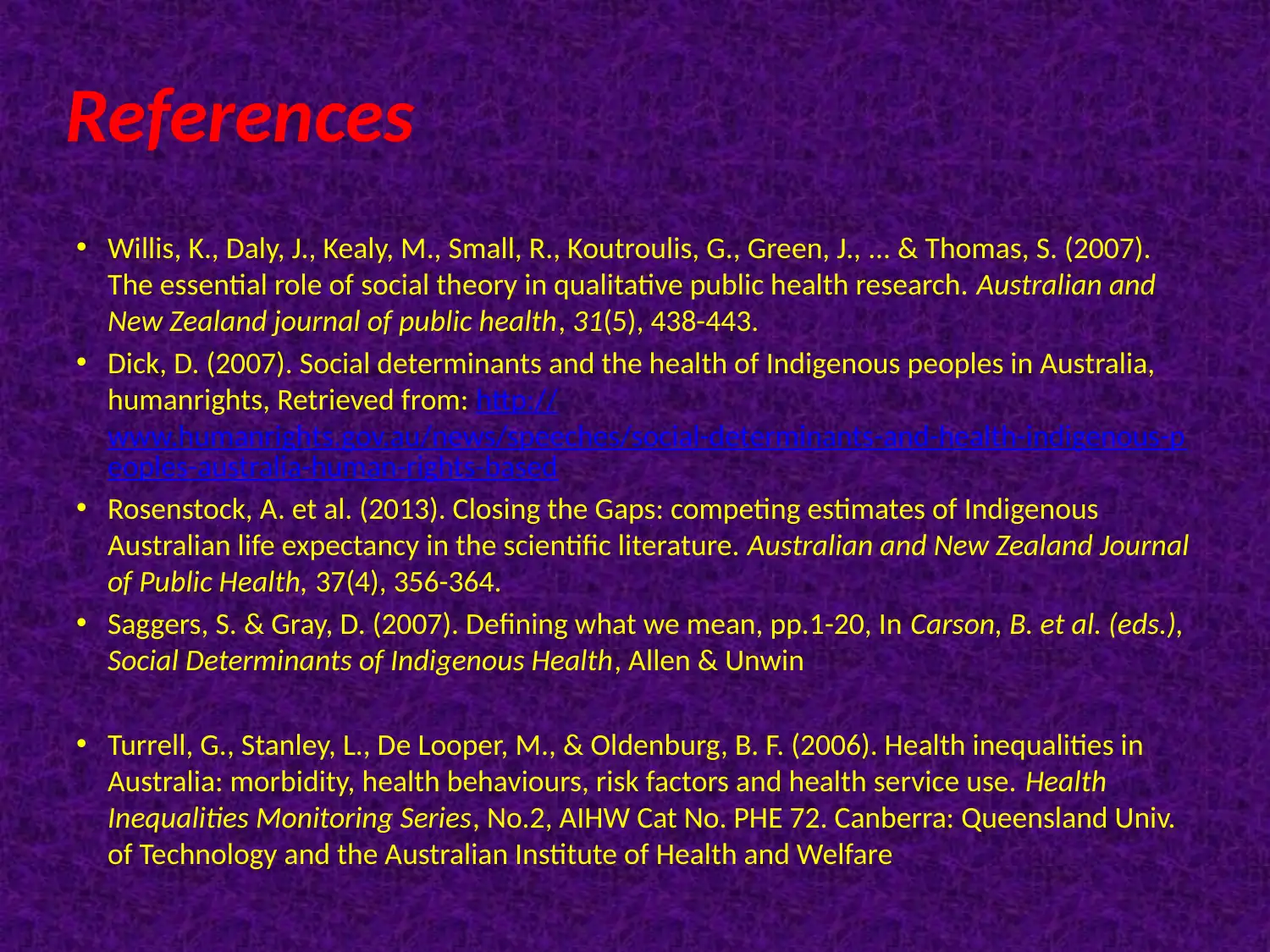Impact of Social Theories on Australian Society, Systems and Policies
VerifiedAdded on 2023/01/04
|9
|492
|44
Report
AI Summary
This report provides an analysis of Australian society, systems, and policies, focusing on the application of social theories such as conflict theory and social practice theory within the context of health. It explores how these theories relate to issues of social justice, particularly in relation to healthcare access and outcomes for Indigenous populations. The report examines the impact of factors such as financial status, income levels, and social position on health disparities. It also delves into the specific health challenges faced by Indigenous Australians, including higher mortality rates and prevalence of diseases like heart disease and kidney failure. The study highlights the role of social workers in addressing these disparities and emphasizes the importance of fairness and equality in healthcare provision, concluding with the need for greater efforts to achieve social justice in health outcomes.
1 out of 9
















![[object Object]](/_next/static/media/star-bottom.7253800d.svg)